- Clone
- 9M1-3 (See other available formats)
- Regulatory Status
- RUO
- Other Names
- Lgals9, Gal-9, Ecalectin, Tumor antigen HOM-HD-21, Ecalectin
- Isotype
- Mouse IgG1, κ
- Ave. Rating
- Submit a Review
- Product Citations
- publications

-

Human T-lymphoblastic leukemia cell line MOLT-4 was fixed and permeabilized, and then stained with human Galectin-9 (clone 9M1-3) FITC (filled histogram) or mouse IgG1, κ FITC isotype control (open histogram).
| Cat # | Size | Price | Quantity Check Availability | Save | ||
|---|---|---|---|---|---|---|
| 348911 | 25 tests | 132€ | ||||
| 348912 | 100 tests | 278€ | ||||
Galectin-9 is a mammalian lectin with a molecular weight around 50 kD. It is a member of the β-galactoside-binding family. With two conserved carbohydrate recognition domains (CRDs), galectin-9 binds small β-galactosides as well as complex glycoconjugates. HAVCR2/TIM3 has been reported as one of its ligands. Galectin-9 may be retained intracellularly or transported to the cell surface where it can be cleaved to generate a soluble form. Galectin-9 is expressed by lymphocytes, dendritic cells, granulocytes, eosinophils, astrocytes, endothelial cells, fibroblasts, and thymus epithelial cells. It can be induced by cytokines in various cell types and is involved in cell aggregation, adhesion, chemotaxis, and apoptosis; galectin-9 induces regulatory T cells and suppresses Th1 and Th17 responses.
Product DetailsProduct Details
- Verified Reactivity
- Human
- Reported Reactivity
- African Green, Baboon, Cynomolgus
- Antibody Type
- Monoclonal
- Host Species
- Mouse
- Immunogen
- Recombinant peptide from C-terminus of Galectin-9
- Formulation
- Phosphate-buffered solution, pH 7.2, containing 0.09% sodium azide and BSA (origin USA)
- Preparation
- The antibody was purified by affinity chromatography and conjugated with FITC under optimal conditions.
- Concentration
- Lot-specific (to obtain lot-specific concentration and expiration, please enter the lot number in our Certificate of Analysis online tool.)
- Storage & Handling
- The antibody solution should be stored undiluted between 2°C and 8°C, and protected from prolonged exposure to light. Do not freeze.
- Application
-
ICFC - Quality tested
FC - Reported in the literature, not verified in house - Recommended Usage
-
Each lot of this antibody is quality control tested by intracellular immunofluorescent staining with flow cytometric analysis. For flow cytometric staining, the suggested use of this reagent is 5 µl per million cells in 100 µl staining volume or 5 µl per 100 µl of whole blood.
- Excitation Laser
-
Blue Laser (488 nm)
- Application Notes
-
Additional reported applications (for the relevant formats) include: cell surface staining for flow cytometry1 and blocking of TIM-3 binding to galectin-91.
-
Application References
(PubMed link indicates BioLegend citation) -
- Klibi J, et al. 2009. Blood 113:1957. (FC, Block)
- Sada-Ovalle I, et al. 2012. J. Immunol. 189:5896. PubMed
- Product Citations
-
- RRID
-
AB_2562689 (BioLegend Cat. No. 348911)
AB_2562689 (BioLegend Cat. No. 348912)
Antigen Details
- Structure
- Member of the β-galactoside-binding lectin family. Molecular weight around 50 kD. Binds small β-galactosides as well as complex glycoconjugates with two conserved carbohydrate recognition domains (CRDs).
- Distribution
-
Lymphocytes, dendritic cells, neutrophils, eosinophils, astrocytes, endothelial cells, fibroblasts, thymus stromal/epithelial cells.
- Function
- Cell aggregation, adhesion, chemotaxis, apoptosis, suppression of Th1 and Th17 responses, and induction of regulatory T cells.
- Ligand/Receptor
- HAVCR2/TIM3
- Cell Type
- Astrocytes, Dendritic cells, Endothelial cells, Eosinophils, Epithelial cells, Fibroblasts, Lymphocytes, Neutrophils, Tregs
- Biology Area
- Apoptosis/Tumor Suppressors/Cell Death, Cell Adhesion, Cell Biology, Cell Motility/Cytoskeleton/Structure, Immunology
- Molecular Family
- Adhesion Molecules, Immune Checkpoint Receptors
- Antigen References
-
1. Seki M, et al. 2008. Clin. Immunol. 127:78.
2. Tsuboi Y, et al. 2007. Clin. Immunol. 124:221.
3. Zhu C, et al. 2005. Nat. Immunol. 6:1245.
4. Dunphy JL, et al. 2002. J. Biol. Chem. 277:14916. - Gene ID
- 3965 View all products for this Gene ID
- UniProt
- View information about Galectin-9 on UniProt.org
Related Pages & Pathways
Pages
Related FAQs
Other Formats
View All Galectin-9 Reagents Request Custom Conjugation| Description | Clone | Applications |
|---|---|---|
| Purified anti-human Galectin-9 | 9M1-3 | ICFC,IHC-P,FC,Block |
| PE anti-human Galectin-9 | 9M1-3 | ICFC,FC |
| APC anti-human Galectin-9 | 9M1-3 | ICFC,FC |
| PerCP/Cyanine5.5 anti-human Galectin-9 | 9M1-3 | ICFC,FC |
| FITC anti-human Galectin-9 | 9M1-3 | ICFC,FC |
| Alexa Fluor® 488 anti-human Galectin-9 | 9M1-3 | ICFC,FC |
| PE/Cyanine7 anti-human Galectin-9 | 9M1-3 | ICFC,FC |
| Brilliant Violet 421™ anti-human Galectin-9 | 9M1-3 | ICFC,FC,IHC-P |
| Alexa Fluor® 594 anti-human Galectin-9 | 9M1-3 | IHC-P |
| Alexa Fluor® 647 anti-human Galectin-9 | 9M1-3 | ICFC,FC,IHC-P |
| Ultra-LEAF™ Purified anti-human Galectin-9 | 9M1-3 | ICFC,FC,Block |
| TotalSeq™-B0016 anti-human Galectin-9 | 9M1-3 | ICPG |
| TotalSeq™-C0016 anti-human Galectin-9 | 9M1-3 | ICPG |
Customers Also Purchased
Compare Data Across All Formats
This data display is provided for general comparisons between formats.
Your actual data may vary due to variations in samples, target cells, instruments and their settings, staining conditions, and other factors.
If you need assistance with selecting the best format contact our expert technical support team.
-
Purified anti-human Galectin-9
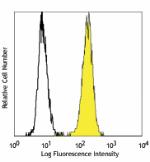
Human acute lymphoblastic leukemia cell line MOLT-4 intracel... 
Human paraffin-embedded colon tissue slices were prepared wi... -
PE anti-human Galectin-9

Human acute lymphoblastic leukemia cell line MOLT-4 intracel... -
APC anti-human Galectin-9
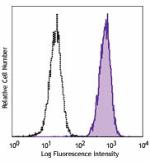
Human T-lymphoblastic leukemia cell line, MOLT-4, was fixed,... -
PerCP/Cyanine5.5 anti-human Galectin-9
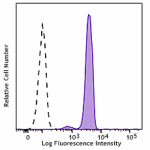
Human T-lymphoblastic leukemia cell line MOLT-4 was fixed, p... -
FITC anti-human Galectin-9

Human T-lymphoblastic leukemia cell line MOLT-4 was fixed an... -
Alexa Fluor® 488 anti-human Galectin-9
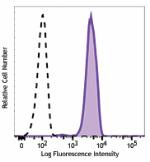
Human T-lymphoblastic leukemia cell line, MOLT-4, was fixed,... -
PE/Cyanine7 anti-human Galectin-9
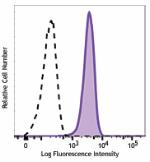
Human acute lymphoblastic leukemia cell line MOLT-4 intracel... -
Brilliant Violet 421™ anti-human Galectin-9

Human T-lymphoblastic leukemia cell line, MOLT-4, was fixed,... 
Human paraffin-embedded colon tissue slices were prepared wi... -
Alexa Fluor® 594 anti-human Galectin-9

Human paraffin-embedded colon tissue slices were prepared wi... -
Alexa Fluor® 647 anti-human Galectin-9
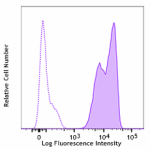
Human T-lymphoblastic leukemia cell line, MOLT-4, was fixed,... 
Human paraffin-embedded colon tissue slices were prepared wi... -
Ultra-LEAF™ Purified anti-human Galectin-9

Human acute lymphoblastic leukemia cell line MOLT-4 intracel... -
TotalSeq™-B0016 anti-human Galectin-9
-
TotalSeq™-C0016 anti-human Galectin-9
 Login / Register
Login / Register 









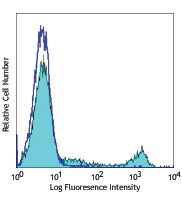


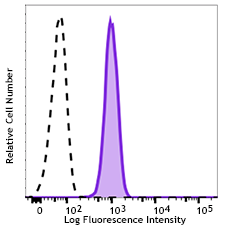



Follow Us